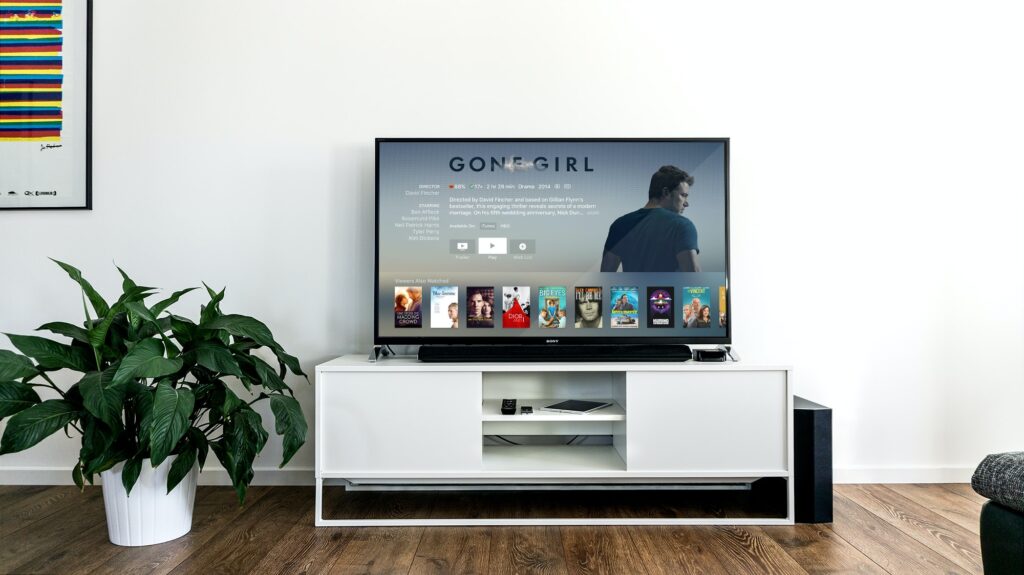
Replace old electronics to lower your electric bill

Most recent
Your old electronics may be working fine, but replacing them with newer models will help you save on your electric bill.
The average retail price of electricity has been increasing steadily in the last two decades. In the year 2000, households across the United States paid on average 8.42 cents per kilowatt hour. Ten years later, this number had increased to 11.54 cents. In 2020, this figure stood at 13.15 cents per kilowatt hour. This may seem minor, but when translating the increase into percentages, the jump becomes tangible. Over the span of just two decades the price per kilowatt hour has increased with an average of 56%.
In 2022, energy prices soared even faster, with electricity prices jumping 5.6% in 2021. The United States Chamber of Commerce contributes the following factors: supply and demand, uncertainty for investors as fossil fuels are being phased out, and supply chain and labor shortages, which are necessary to ramp up production and transport bottlenecks to deliver the resources. Halted infrastructure projects have prevented gas and oil pipeline projects from being completed. There are additional factors that come into play that drive up electricity costs for households. But, that doesn’t mean there’s nothing you can do to reduce your electric bill. One of them is replacing your old electronics with newer models.
Old electronics waste a lot of energy
In 2012, The Natural Resources Defense Council (NRDC) reported that the California Energy Commission was the first state that had passed legislation that would set a minimum energy efficiency standard for battery chargers. According to the NRDC, battery power devices, such as smartphones utilize old chargers, with some of them turning 97 percent of the electricity into heat, with only 3 percent reaching the device itself. By forcing more efficient charging devices, the citizens of California can save up to $300 million dollars on electricity through the lifespan of a device.
Older appliances often look fine on the surface, but throughout the years they lose a lot of efficiency due to degrading parts. Old seals that don’t deliver an airtight seal on your freezer, leaking precious cool air, the faulty thermostat on your dryer that results in longer sessions than necessary. The Electric Cooperatives of Arkansas (AECC) states that a lot of American households keep their freezer or fridge in unconditioned garages, at which said appliances need to work harder to keep the contents cool. The AECC notes that older fridges or freezers can cost $1 per day to run due to their 66% higher average energy consumption.
Use up to 50% less energy with an air fryer
In 2022, CNET compared the energy usage of an air fryer compared to the traditional gas oven and electric oven. David Watsky said, “Using New York’s electricity prices, we safely say a standard 4-quart air fryer will cost about 25 cents per hour to run.” Further saying, “That’s 50% more energy-efficient than the average full-size electric oven and about 35% more efficient than the average gas oven (calculated with New York state’s average energy costs).”
Another option is to opt for the microwave more often. Whilst it’s not possible to cook all foods with a microwave, a microwave still uses up to 80% less energy than a conventional oven, according to Energy Star. Microwaves also emit less heat, which during warmer months, or in warmer climates, can reduce the usage of air conditioning systems, and decrease the electric bill.
Replace your old fridge and save $150 dollars per year
Minnesota-based Clean Energy Resource Teams (CRTS) found that refrigerators from the 1970s use five times more energy than current-day technologies. While many households will have replaced their fridge over that time period, considering the average lifespan of a fridge, which is around 15 to 20 years, old appliances may still be cooling your vegetables as we speak. When looking for a new fridge, the CRTS recommends opting for smaller size fridges, as on average a lot of room goes underutilized. Fridges with a freezer at the bottom also use energy more efficiently than side-by-side models.
An LCD TV consumes 50% more energy than a LED TV
Just like with the previously mentioned fridge, your TV might be working fine and the image is still crisp, but your LCD television might be using more energy than you’d like. Television accounts for most of the electricity usage compared to other consumer devices in the household. Australian-based Rainbow Power Company states that television is responsible for 9.5% of energy consumption in the average Australian household.

Dovetail Partners, Inc. released an energy consumption breakdown of different televisions in 2019, comparing the energy of CRTs, LCD, and LED television. They found that a 50-inch LCD television consumes 50% more energy than a similar-sized LED TV. A Plasma TV performs even worse, requiring three to four times the energy than a LED counterpart. Selecting a television with an Energy Star certification is 25% more efficient than non-Energy Star certified products without losing image quality.
Replace your next PC with a laptop
It will not come as a surprise to many, but the heavy-duty, or older, desktop PC uses more energy to run than a laptop. Desktop PCs have stronger hardware, but also power or send signals to other devices such as external speakers, keyboards, and monitors. The Belgian website Energuide states that desktop PCs use on average 200 watts per hour. During an average operating window of 8 hours, a desktop PC can use up to 600 kWh. A laptop on the other hand needs around 50 to 50 watts per hour, resulting in energy usage between 150 and 300 kWh. The power saving can range from 50% to 85% when going for a laptop.
If switching to a laptop is not an option, opt for an energy-efficient power supply unit (PSU) that is 80 Plus Platinum or Gold certified. These types of power units are more efficient and therefore use less energy to operate. PCWorld said about the efficiency of the PSU, “The more efficient a power supply is, the less power it uses and the less heat it generates — which means a lower electric bill and a quieter PSU. The components tend to be better too, which means you should be able to use it for longer.” But there’s even an easier step you can take right now to prevent your PC from wasting energy and that is not leaving your PC on standby.
Newer air conditioners are far more efficient
The average lifespan of a modern air conditioner is around 20 years. This sounds great in practice, but the energy efficiency of an older unit is far less than newer models. According to Air Mechanic Services, a 20-year-old unit in Katy, Texas consumes approximately 6 kWh to cool an average home, compared to current models, which use 1.6 kWh of energy. They note that single-stage piston-driven compressors have since been replaced by two-stage scroll compressors.
The Department of Energy found that air conditioners can take up to 5% of the total energy consumption in the United States. The government organization says that by replacing old models, a household can save upwards of 20 to 40 percent in home cooling costs. Even replacing a unit that is 10 years old, can be a worthwhile investment. When looking for a newer model, The Department of Energy advises looking for air conditioners with a Seasonal Energy Efficiency Rating (SEER) of at least 15, combined with a variable speed handler and an Energy Star certification. These units will deliver the highest efficiency.
UK households waste $2.02 billion through gadgets on standby
In 2012, Reuters reported that households across the United Kingdom were wasting around 86 pounds (approximately $108) per year on gadgets, such as PCs or televisions, that were on standby. The non-profit Energy Saving Trust, which performed the study for the UK government, found that devices on standby equate to 16% of domestic power demand. Energy Saving Trust found that cooking and laundry appliances were taking up most of the energy when on standby compared to other devices across the house.
The study further found that one-person households use as much, if not more, electricity than the average family household and will benefit most from so-called “stand-by” killers to reduce their energy consumption. The American department of Energy also notes that power strips with switches installed are another method to ensure devices don’t draw unnecessary energy.
Planning your old electronics replacement
Replacing your old electronics may be easier said than done as it requires high upfront costs. But considering that you may be wasting precious energy on old appliances, looking into newer releases of your television or fridge might be a worthwhile investment. This rings especially true when one of your appliances is set to be replaced when it has broken down or has reached its maximum lifespan.
Further reading

Is IKEA the fast fashion of furniture?
IKEA is one of the largest furniture companies in the world, but its products play a massive part in mass...

Save money on your energy bill with LEDs
Light bulbs are great for many interiors, delivering a pleasant hue. But by switching to LEDs you can save hundreds of...

Save on your heating bill with the right radiator
The right radiator can make a big difference and help you save up to 30% on your heating bill. Radiators come in...
Most recent

How Myanmar lost 30% of its forest in 30 years
Myanmar is seeing deforestation rates increase rapidly. In the last three decades, the country already lost 30 percent...

Portugal’s struggle to part with fossil fuels
Portugal is heavily reliant on fossil fuels and its love affair with the fossil fuel industry makes transitioning to...

Climate change spells uncertain future for winemakers
Winemakers ride into an uncertain future as climate change spells greater uncertainty for their businesses. Climate...


